Activity
Event/Workshop Report
2022.09.29
Let’s Take a Look! Lighting Design Vol.4
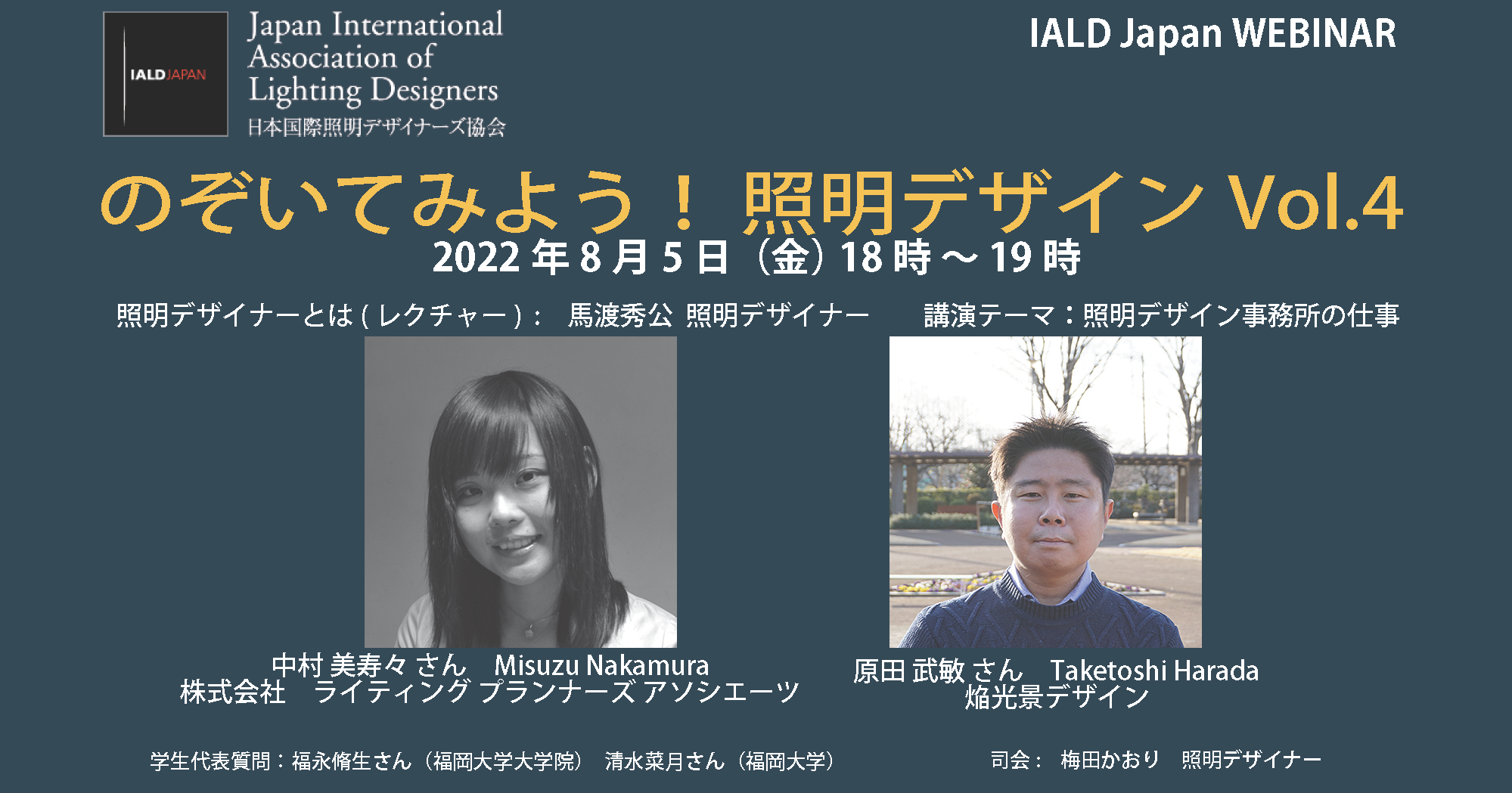
The webinar “Let’s take a look! Lighting Design Vol. 4” was held on August 5th, 2022. In this webinar aimed at students with an interest in lighting design, professional lighting designers who are active in the field share their insight on what makes a good lighting designer and what they do, together with stories from their professional experience.
Mr. Hidekimi Mawatari of Mawatari Design defined lighting designers as “professionals who use their lighting skills to create spaces in collaboration with architects and business owners, targeting urban environments, landscapes, buildings, interiors, art, and events”.
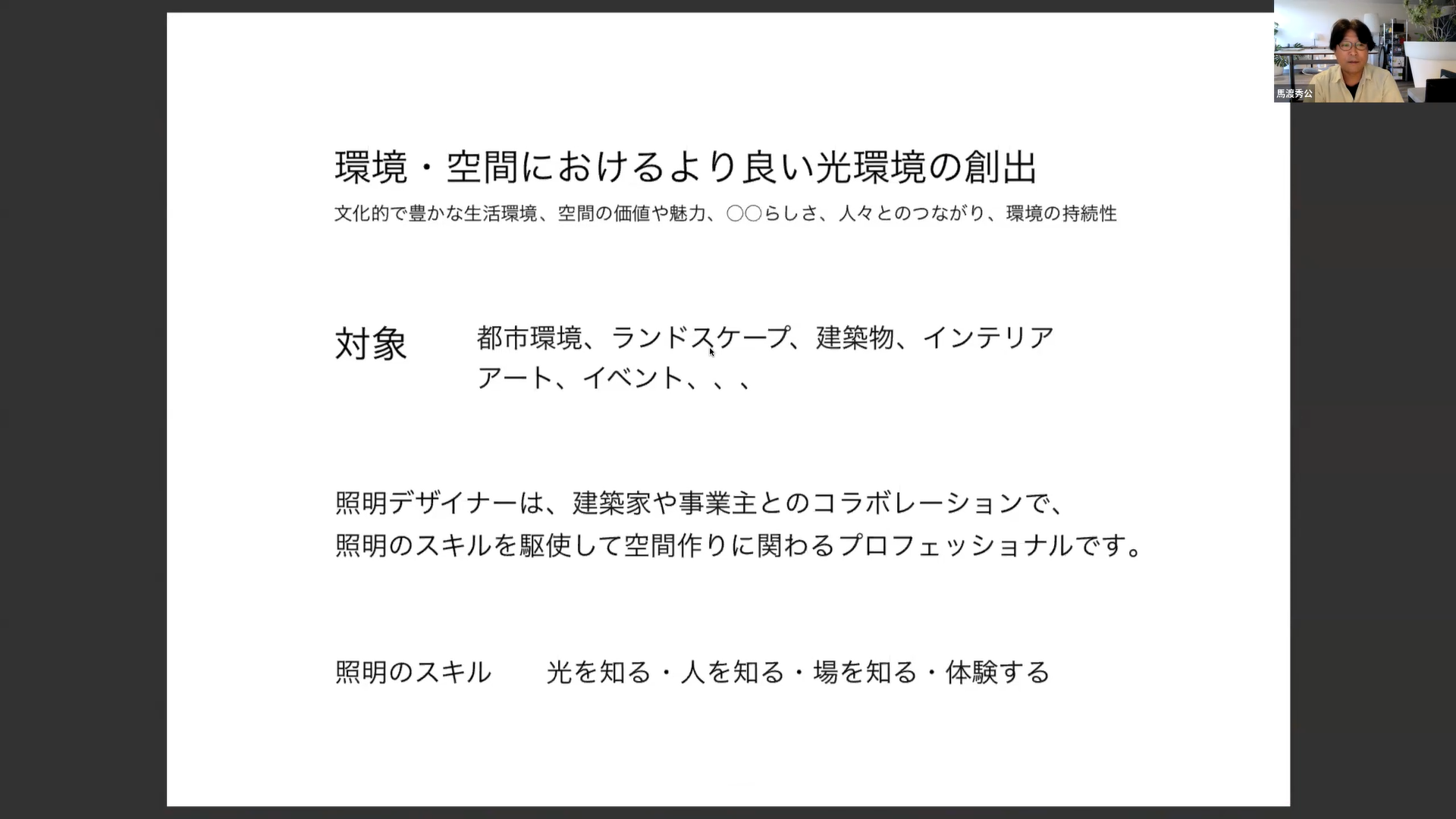
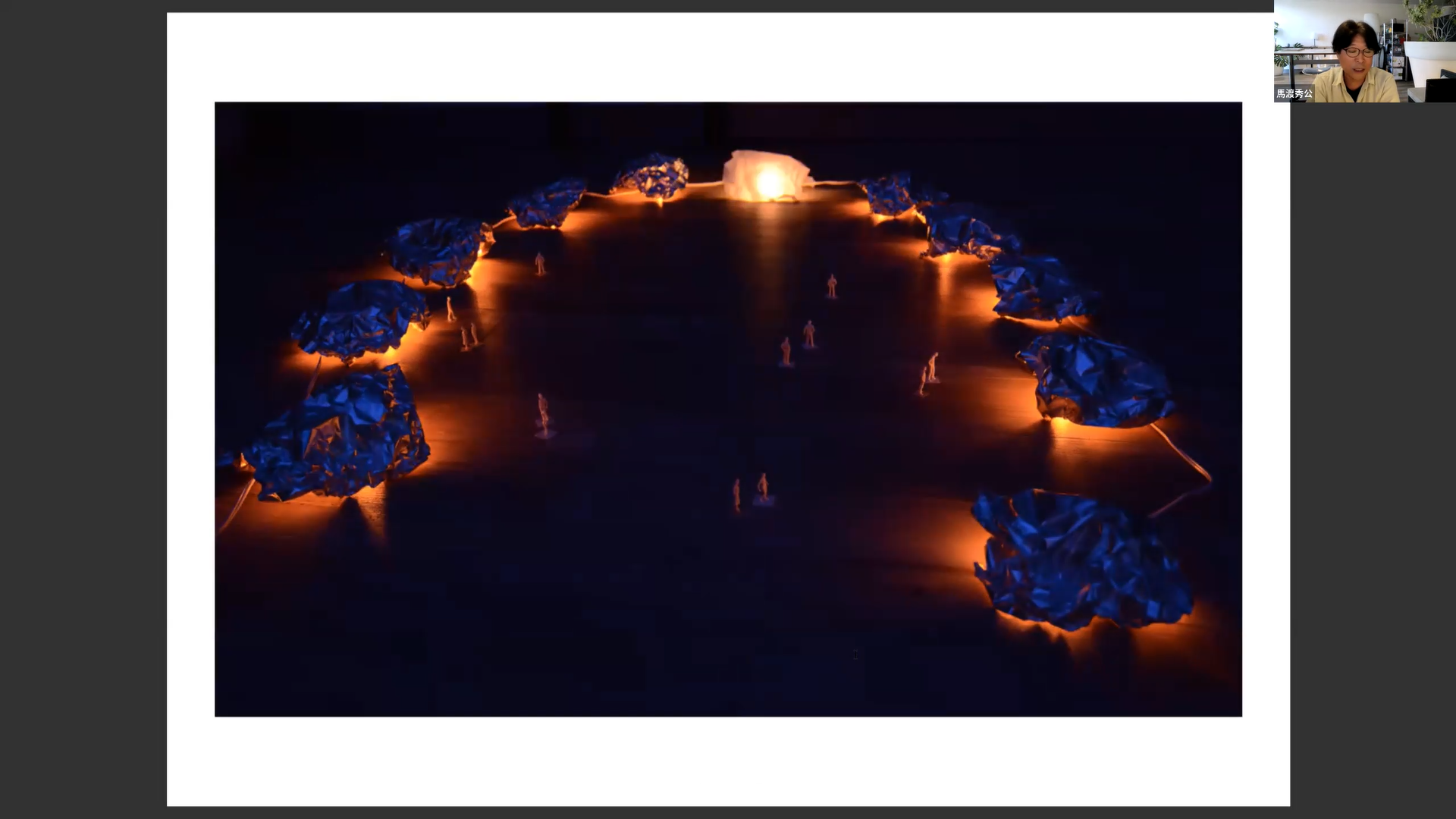
Next, we heard from the two panelists, Ms. Misuzu Nakamura of Lighting Planners Associates and Mr. Taketoshi Harada of Homura Lightscape Design.
Ms. Nakamura, who was inspired to become a lighting designer by the beauty of the night view of Paris she saw while studying in Paris, spoke in detail on the role of lighting design in modern times and a project she took on with Nagasaki City to design the night view for the city, sharing examples from her experiences in the field.
Ms. Nakamura pointed out that in modern urban lighting design, beyond consideration for the environment, “Lighting that is unique to the city, urban lighting that reflects the individuality of the city is required”. In the example of Nagasaki City, Ms. Nakamura conducted a research on the nighttime light environment of the city in parallel to a field survey aimed to understand the history of the streetscape, identifying issues that needed to be addressed, and aimed to improve the nighttime scenery from a bi-directional perspective of both distant and mid-to-close range view.
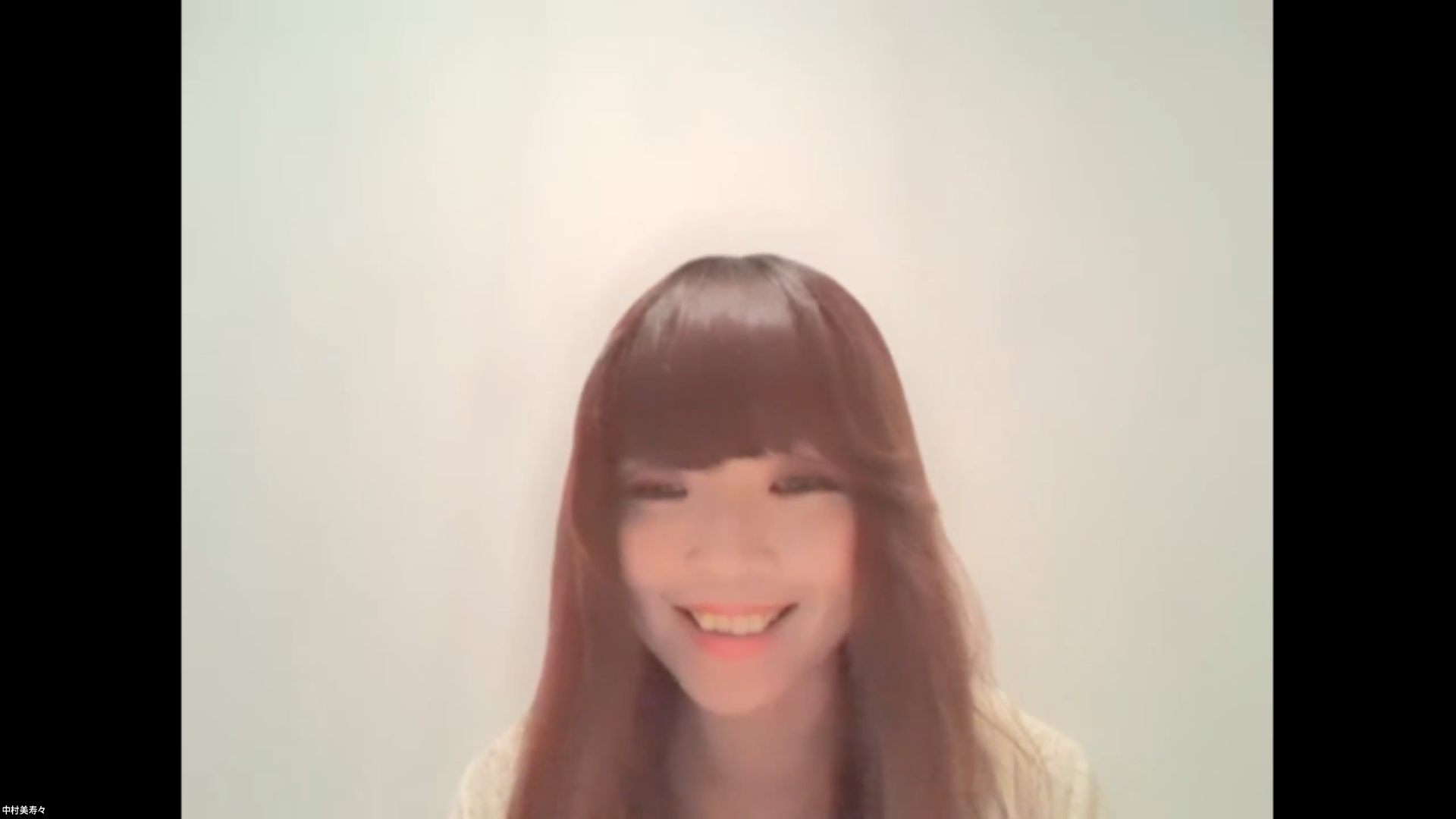
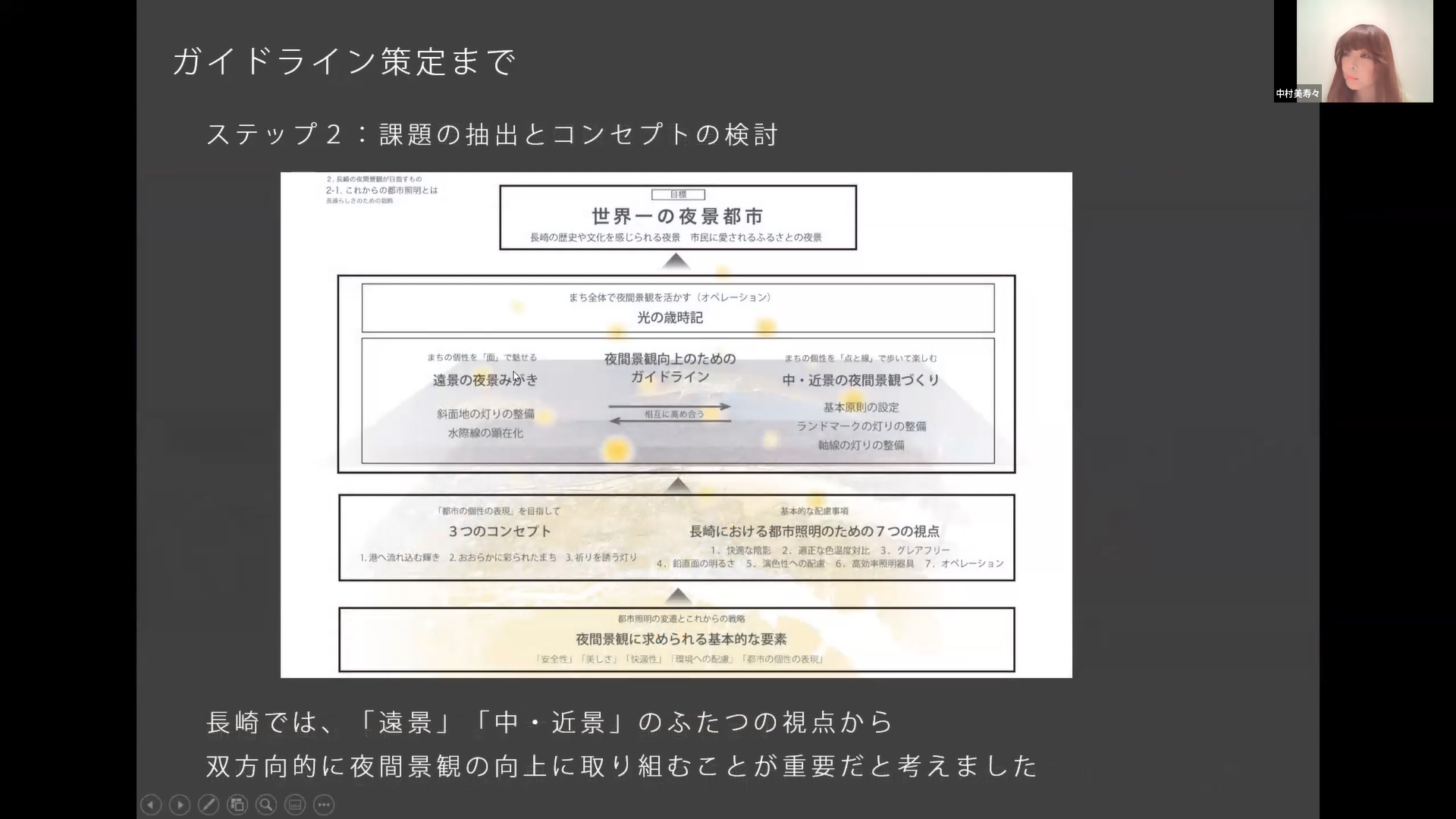
Furthermore, Ms. Nakamura described how she upheld the three following concepts upon developing the
nighttime scenery: “A brilliant light flowing into the port”, to utilize the landscape of the port; “A vibrantly colored city”, to reflect the unique characteristics of the towns of ‘Wakaran culture’, the mixture of Japanese, Chinese and Western cultures that flourished under the isolationist policy in the Edo era when Nagasaki was the only place where trade with the outside world was permitted; and “Light that evokes prayer”, to reflect the history of Christianity and atomic bombing. In the Peace Park area, Ms. Nakamura took pains to reduce unpleasant glare that interfered with the tranquility of the space, use appropriate lux levels, and create lighting that invites a desire for peace and a feeling of prayer. Lighting for the Peace Statue was designed to reduce the shadows, illuminating horizontally from a distance with ultra-narrow lights instead of the traditional method of illuminating from below. The path leading to the statue was placed on the axis of the city, and dots of light were placed in the square in a grid. The lighting for Ōura Church, Prayer Slope, Suwa Shrine, and Meganebashi Bridge were also improved in line with the nighttime environment masterplan in place.
A perspective of lines and planes that connect the city; a nighttime cityscape that the residents feel comfortable in; the practicality of appealing to tourists to come and stay; a night view that is loved by the people and makes them proud that it is theirs – Ms. Nakamura explained that these are the things that she was conscious of.
The next speaker was Mr. Taketoshi Harada, who designs temporary lighting to illuminate Japanese gardens, Buddhist temples and shrines for the autumn foliage and cherry blossom seasons. He shared examples from his work to describe how lighting can change the appearance of a space, and what he is mindful of when designing temporary lighting.
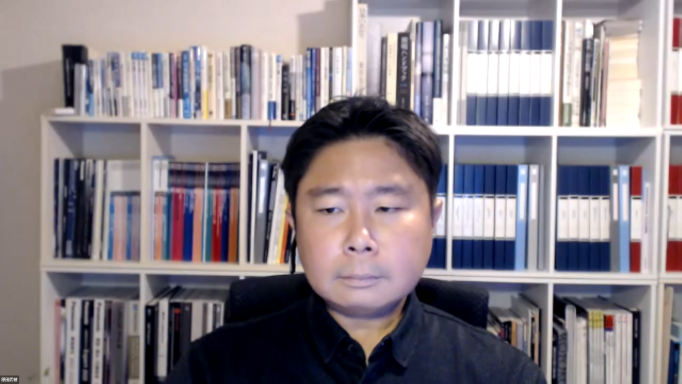
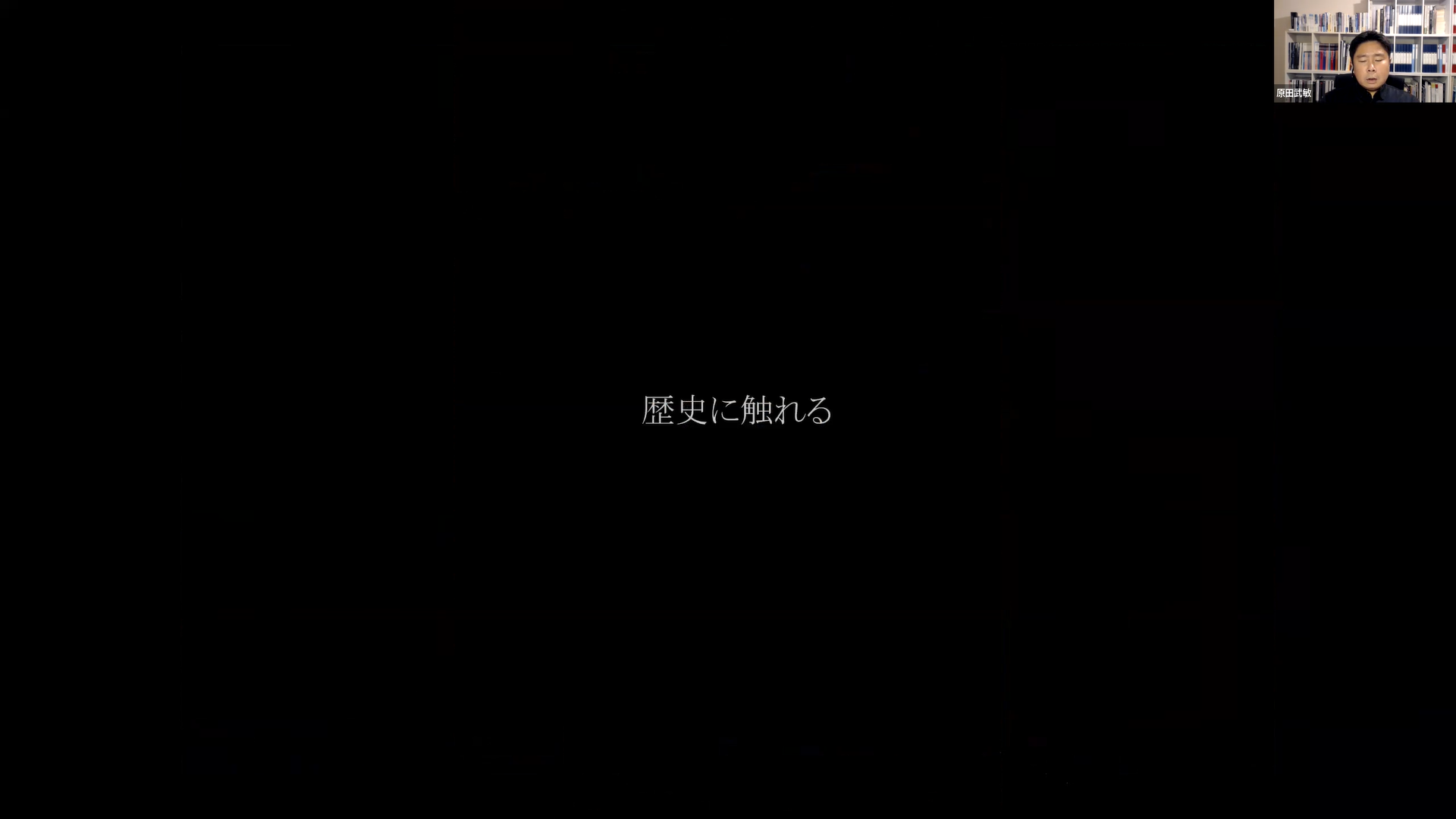
Sharing photographs of places where illuminations change with the seasons, such as Hamarikyu Gardens, Mr. Harada described how “temporary equals diversity of light”, and “light can completely transform the impression of a space”. He gave an example of how a space can change drastically using the illumination of Kyū-Furukawa Gardens, where he replaced the large floodlights with small fixtures with a lower amount of light, highlighting the roses at night by downlighting from above in the same way that they bloom towards the sun, and illuminating the trees in the background to create an appearance of depth. “I want to respectfully showcase the shapes of the trees that the gardeners maintain so carefully. A stone wall can look completely different with different angles, colors and intensities of light. Depending on how the light hits, you can see chisel marks that are not visible during the day.”
Describing the appeal of his job, Mr. Harada said, “One of the fun things about temporary lighting design is that you can illuminate historical buildings and gardens with your own interpretation and create different looks and expressions”.
Following the talks, Mr. Haruki Fukunaga, a second-year student at Fukuoka University Graduate School, and Ms. Natsuki Shimizu, a fourth-year student at the Faculty of Engineering, asked questions to the panelists as student representatives. Mr. Fukunaga asked, “How do you manage the visibility of the lighting fixtures to the people visiting during the day?”, to which Ms. Nakamura responded, “That is a troublesome aspect. The fixtures are smaller and less visible, but we also try to place them in places that are hidden and paint them in colors that blend into the surroundings.” Mr. Harada shared his creative methods, saying “To try and make the fixtures less intrusive in the daytime, we place them in less visible places like behind stones or branches, and run the cables along the stake rope fences”. Ms. Shimizu asked the question, “What is key when differentiating between the lighting itself being the main focus and when it illuminates an object?” Ms. Nakamura explained, “That’s an important question. When you want to showcase a building, space or monument, the light does not play a leading role, and you focus on the nuances you create on the object. In contrast, the shimmer and sparkles of light and the atmosphere itself becomes the main focus in luminary displays.” Mr. Harada said that “Colored lighting stands between illuminating objects and luminary displays, and is a production showcasing the color of light”.
Lastly, moderator Ms. Kaori Umeda summarized the discussion commenting, “Light itself is invisible. There are two ways to show light; create something using light itself, or shine a light on an object to showcase it”. With this, the webinar came to a close.

Date: August 5, 2022
Venue: IALD Japan WEBINAR
Moderator: Kaori Umeda
Panelists: Hidekimi Mawatari, Taketoshi Harada, Misuzu Nakamura
Host: IALD Japan
